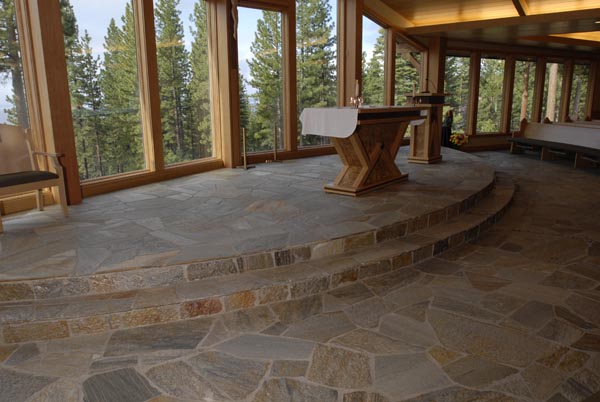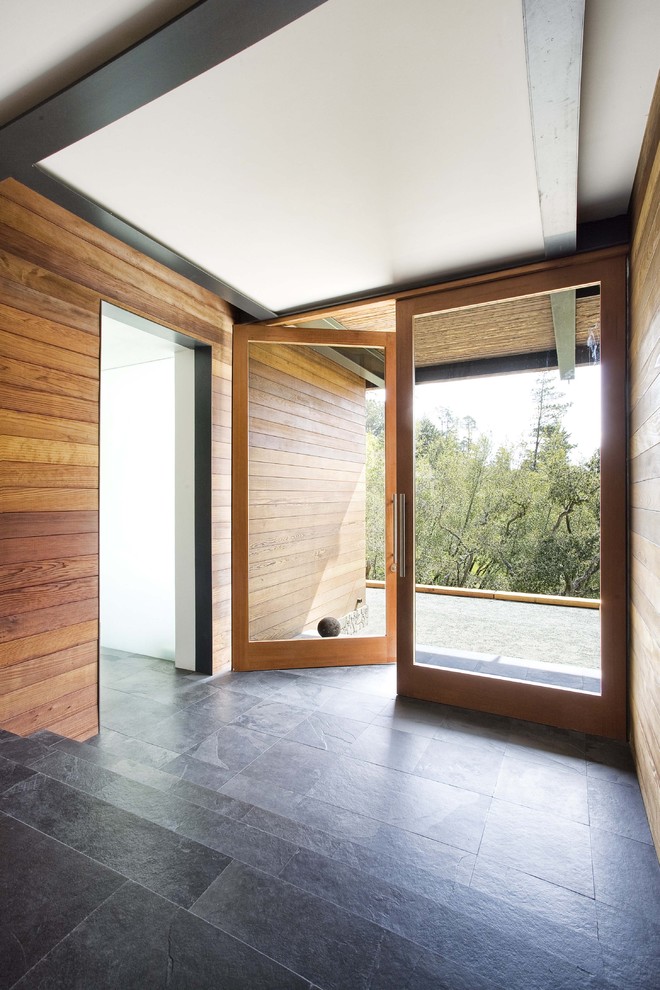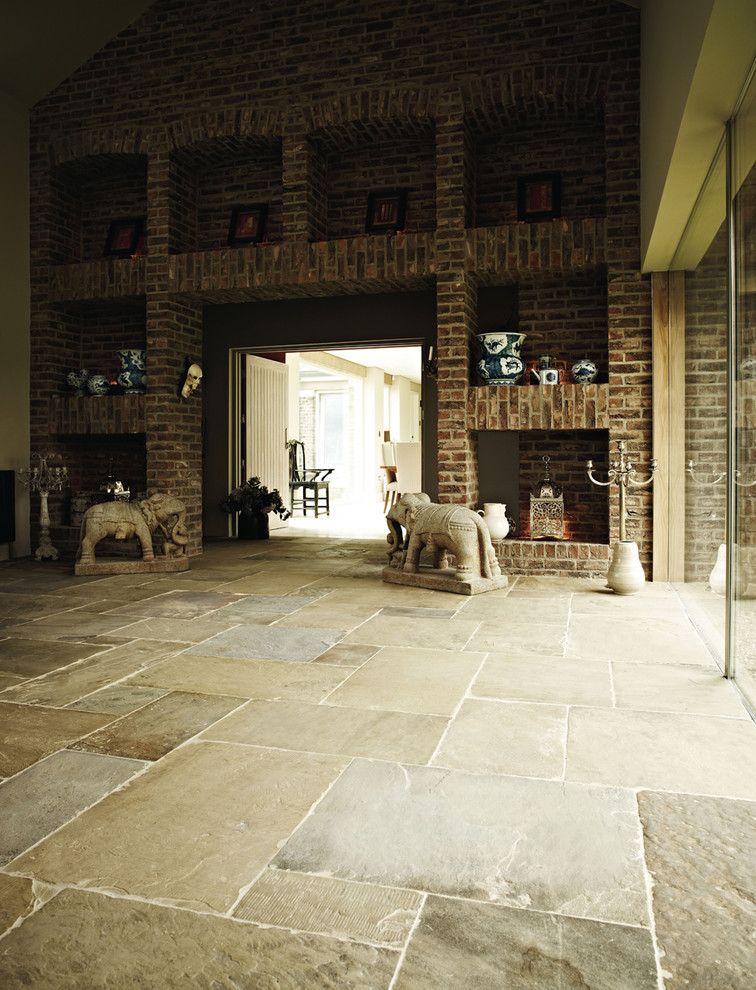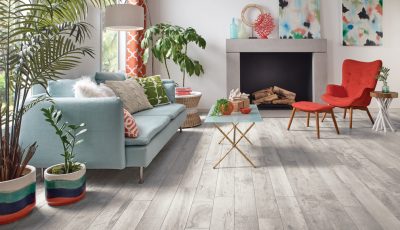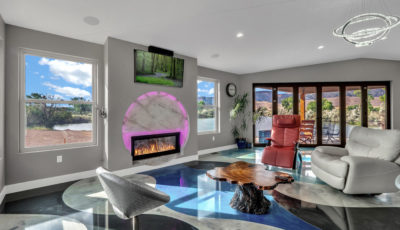Your Floor – How to Find Right Stone Tile
Natural stone has many benefits, but obviously, the biggest benefit is that it looks amazing. When you decide on purchasing the natural stone for your flooring, but you realize that there are a lot of choices to choose from, you might be feeling overwhelmed.
Today, we will be going over the top natural stone types, the pros and cons of each one, the uses of each one and of course, the cost of each one. This way you can better choose the one for your space.
mandrcarpet.com
Slate Tile Flooring
This is the most commonly used natural stone material. It’s considered to be a metamorphic rock which allows it to be sliced into sheets, once it’s into sheets it’s easier to then cut it into tiles.
When you go to a showroom and look at slate, you will find that the denser the rock, the harder the stone is going to be – the harder it is, the less it will flake away or fall apart.
Photo by Quezada Architecture – Search modern entryway pictures
Pros: Incredibly durable and resilient to use.
Cons: You can’t install this on your own. You have to have a professional install it and this will, in turn, add to the cost of the installation.
Cost: This usually runs between $5 to $20 per square foot.
Best Areas For Slate: Hallways, kitchens, living rooms, and even entryways.
Travertine Tile Flooring
Another very commonly used flooring material carried by many tile stores. Travertine tile is often mistakenly sold as marble or even limestone tile, but it’s not marble or limestone. Travertine tile is a softer natural stone, unlike limestone but it shares some similarity to marble tile. Also, travertine has a sort of matte finish. It’s going to be really difficult, almost impossible to get it to shine, or if you can get it to shine, you can guarantee it won’t stay like this for long.
However, even with the matte finish, travertine can add warmth to any space. Some people say that Travertine is a finicky material that is overly fragile, but if you look at some of the monuments in Rome that are made from this material, like the Trevi Fountain you can clearly see that this stone can really hold up to the test of time. The Trevi Fountain is made from Travertine and yet it’s been there for 300 years.
Photo by Whitstable Island Interiors – Discover beach style bathroom design inspiration
Pros: This stone is available in quite a few different colors like ivory, beige and grey, as well as patterns. Also, it has a softer underfoot than something like limestone.
Cons: It’s not resistant to stains or scratches.
Cost: Travertine can cost anywhere between $5 and $40 per square foot
Best Areas For Travertine: Living rooms, kitchens, bathrooms, even hallways.
Marble Tile Flooring
Marble goes far back to Ancient Roman times. It’s a beautiful material in terms of feel and looks and it carries with it a sense of luxury. This is another material that is prone to stains and scratches, but it’s significantly harder than Travertine. You will need to take care of this material a little more than other materials, but it will be worth it. You will also need to seal marble initially when it first gets installed and throughout the years you have It in your home.
Photo by Innovative Construction Inc. – More contemporary bathroom photos
Pros: Absolutely beautiful in terms of aesthetics. It’s also available in quite a few colors and patterns and it tends to be pretty durable, minus the scratching.
Cons: It doesn’t do well with water, so make sure this is not something you are placing outside, even if it’s right by your door and you have an overhang water can still get on it and ruin it.
Cost: The cost of marble will be between $5 and $50 per square foot.
Best Areas For Marble: Bathrooms, kitchens, hallways and living rooms.
Granite Tile Flooring
Marble is beautiful, yes, but so is granite. This is by far one of the hardest stones out there, even harder than marble. Marble has to stay away from water? Well, granite repels it which makes it perfect for almost any room.
Photo by Diane Plesset, CMKBD, NCIDQ, C.A.P.S. – Search traditional kitchen design ideas
Pros: It’s beautiful. It’s pretty resilient. It comes in a wide array of colors. It can also be used inside or outside.
Cons: Sometimes it can seem cold. It’s a good idea that if you use granite, that you try to incorporate other colors and materials, especially wood, into the mix, to add warmth.
Cost: Granite will cost anywhere between $3 and $12 per square foot.
Best Areas For Granite: Outdoors, hallways, bathrooms, powder rooms, kitchens, living rooms – actually, pretty much anywhere.
Sandstone Tile Flooring
This is a material that isn’t commonly used, can be grout, but that is changing. This is also a metamorphic rock. While with other stones it’s harder to find consistent tones, this one is about as consistent as you can get.
Photo by Lapicida Stone Group – Search eclectic living room pictures
Pros: Extremely forgiving and resilient.
Cons: Not a lot of color options.
Cost: $10 to $38 per square foot.
Best Areas For Sandstone: Home offices, kitchens, living rooms, bathrooms, etc.

